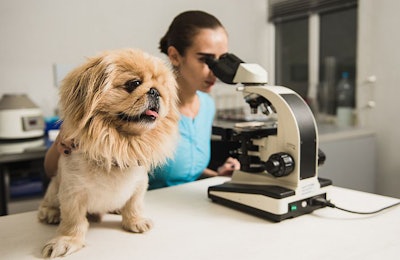
The expanding global pet food industry benefits from academic and market research on topics ranging from veterinary medicine and animal nutrition to advertising and economics. However, few researchers have stopped to ask if that growing body of information provides the specific insights that pet food industry executives feel they need. One scientist, Lonnie Hobbs, Jr., Ph.D. student in agricultural economics at Kansas State University, questioned if academic studies and industry reports provided the insights and research that pet food industry decision-makers genuinely needed and wanted. Hobbs designed a questionnaire to assess what pet food business leaders want from scientific research and conducted a survey among a range of companies. Hobbs presented the results of this study at Petfood Forum 2022 on May 4 in Kansas City, Missouri, USA.
Overall, Hobbs included 35 survey respondents from companies of different sizes. Pet food company leaders’ responses were classified by company size to identify different needs among a range of businesses. First, the questionnaire asked which area of research was most important: production, raw materials or marketing and distribution. Among small companies with less than 100 employees, research on production was most important. Large pet food company leaders responded the same regarding their businesses with more than 1,000 employees. For mid-sized companies with 500 to 1,000 employees, respondents selected raw materials research as most important.
Information demand similarities among pet food companies
Despite differences among companies by size, new research on certain topics may interest the leaders of all brands. For example, regarding raw materials, ongoing supply chain snarls may be driving leaders’ demands for more insights on ingredient supplies, regardless of a company's number of employees.
“Availability and consistent supply of raw materials was something that was mentioned as an important information gap by each of the three company sizes,” Hobbs said.
Processing methods and technologies were another topic that all three company sizes included in their top three research interests. Validating claims was important in marketing and distribution research.
“Forecasting consumer tastes and preferences was something that was mentioned and highlighted as an important research need by each of the three company sizes,” Hobbs said.
“In some form or fashion, the three [sizes of] companies mentioned the need for feedback from actual customers and consumers,” he said. “Small-scale companies consider consumer surveys and trend overviews. Medium-scale companies highlighted complaints by customers. Large-scale companies highlighted using external resources and internal feedback from customers as the important information gaps in terms of marketing and distribution to inform decisions for these companies.”
Survey respondents identified the humanization of pet food as a top trend guiding the industry, suggesting the ramifications of humanization need more research to guide leaders’ decisions. Pet food company leaders at all sizes of company pointed out the challenge of sustainable proteins facing the industry during the coming decade.
Similarities among pet food companies highlight areas of potentially fruitful study. By identifying specific topics that pet food leaders want to know more about, researchers can target their efforts to produce highly relevant results that benefit the industry, while attracting further funding.

















